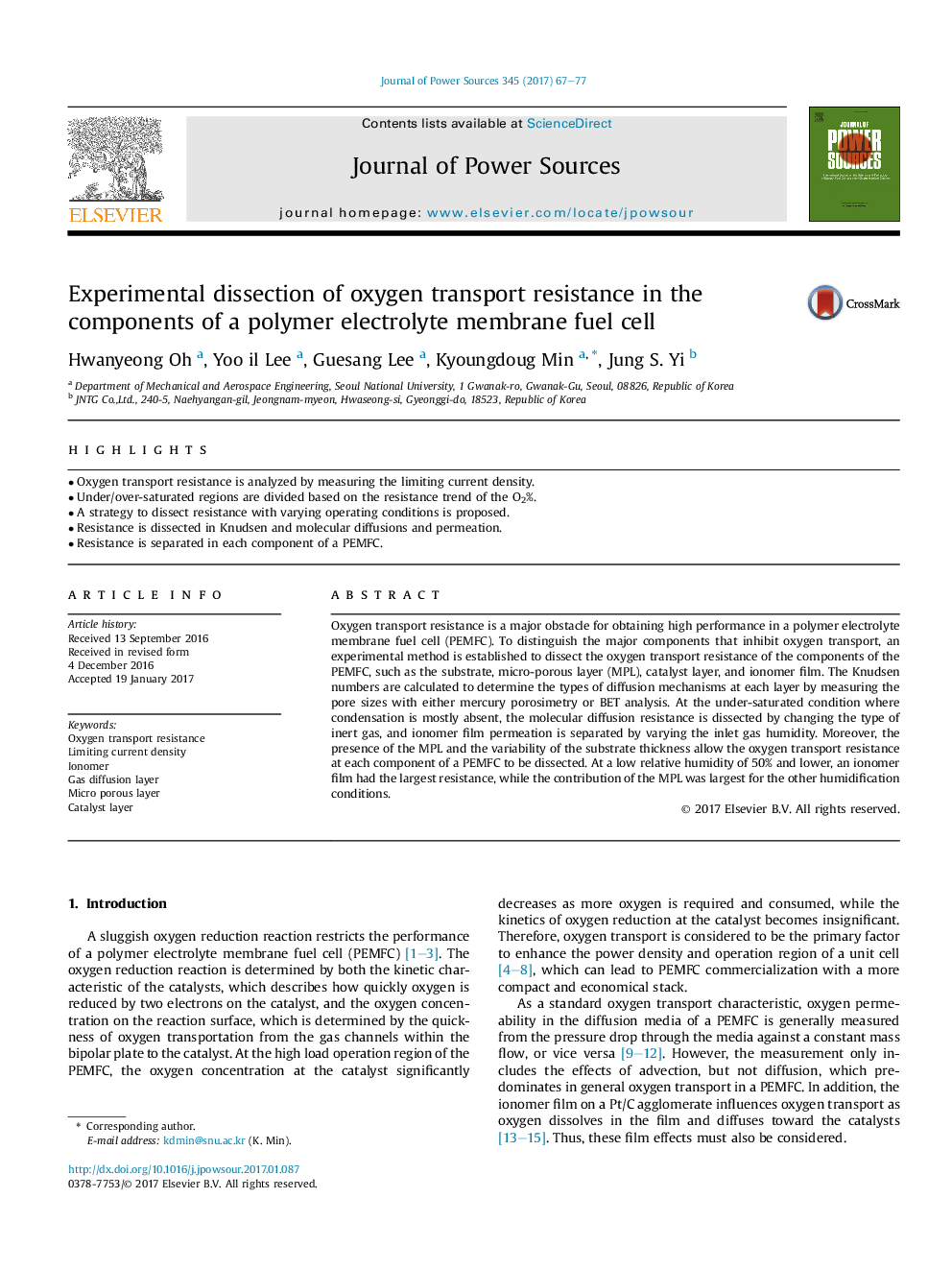| Article ID | Journal | Published Year | Pages | File Type |
|---|---|---|---|---|
| 5149599 | Journal of Power Sources | 2017 | 11 Pages |
Abstract
Oxygen transport resistance is a major obstacle for obtaining high performance in a polymer electrolyte membrane fuel cell (PEMFC). To distinguish the major components that inhibit oxygen transport, an experimental method is established to dissect the oxygen transport resistance of the components of the PEMFC, such as the substrate, micro-porous layer (MPL), catalyst layer, and ionomer film. The Knudsen numbers are calculated to determine the types of diffusion mechanisms at each layer by measuring the pore sizes with either mercury porosimetry or BET analysis. At the under-saturated condition where condensation is mostly absent, the molecular diffusion resistance is dissected by changing the type of inert gas, and ionomer film permeation is separated by varying the inlet gas humidity. Moreover, the presence of the MPL and the variability of the substrate thickness allow the oxygen transport resistance at each component of a PEMFC to be dissected. At a low relative humidity of 50% and lower, an ionomer film had the largest resistance, while the contribution of the MPL was largest for the other humidification conditions.
Keywords
Related Topics
Physical Sciences and Engineering
Chemistry
Electrochemistry
Authors
Hwanyeong Oh, Yoo il Lee, Guesang Lee, Kyoungdoug Min, Jung S. Yi,
